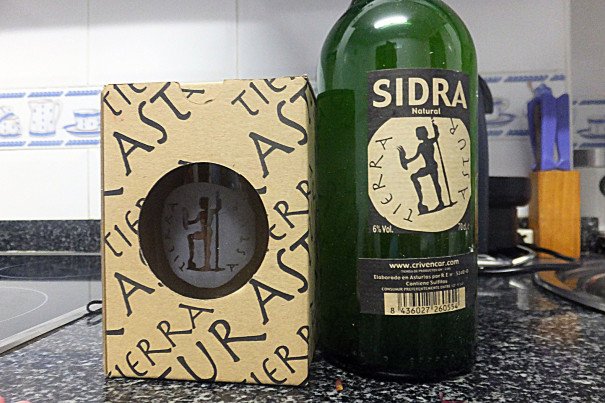
Someone Needs to Teach You How to Pour Sidra

Someone Needs to Teach You How to Pour Sidra
Sidra in Niembro
When I was an au pair in the province of Asturias, Spain, I spent weekends with my host family in a tiny coastal village called Niembro.
With only 190 year-round inhabitants, Niembro is a sleepy little town, but our weekends there always felt frenetic. Weekends in Niembro meant driving through green mountain passes to tucked-away villages, running shrieking into freezing-cold sea waves, and taking midday excursions to tide pools with an eight-year-old holding my left hand and a four-year-old holding my right. When in Niembro, my host mom was always whisking the family away to take a hike or visit some untamed shoreline or experience some local festival.
Generally, after we’d finished our daily adventure, the whole family would retire to a beachside bar where we’d relax with friends and drink sidra. I spent many long evenings in Niembro hanging out with my host parents and their friends while their young children ran and played around the bar. At regular intervals, my host dad would nod at one of the others and ask: “Sidra?” If they assented, he would raise a green glass bottle over his head and pour a steady stream of liquid into a cup that he held down below his waist. The lightly-carbonated sidra would fall several feet through the air, bubbling and fizzing as it hit the side of the cup. He would then hand the half-full cup to another member of the group, who would pound the fizzy, foamy cider drink in one or two gulps, toss any remaining liquid onto the ground, and give the cup back. This process would repeat until everyone around the table had been served.
This specific pouring-and-chugging technique is absolutely crucial to the enjoyment of sidra. The idea is to use gravity to create as many bubbles as possible, which teases out the light and pleasantly tart apple flavor of the drink. To do otherwise—especially in the province of Asturias, where most of Spain’s sidra is produced—is absolute blasphemy.
I would love to tell the story of how I learned to pour sidra in Niembro, but it would be a lie. Whenever I tried, the liquid generally ended up anywhere but the cup. In one particularly mortifying instance, I accidentally spilled a bunch of sidra on a stranger’s feet at a party. Other times, I managed to get the majority of the drink in the cup but my drinking partners kindly informed me that the sidra was too flat to really enjoy.
However, for a drink that’s so difficult to consume correctly, sidra sure goes down easy. It’s fruity, bubbly, and delicious. Asturian people warned me time and again that sidra is dangerously smooth and goes right to your head. They’re right—especially since tradition dictates that you chug the contents of your glass the second it’s in your hand. Plus, sidra is enjoyed in rounds and is as much a social experience as it is a beverage. If you’re with an enthusiastic group of drinkers, you might be shocked at how quickly you can put away a bottle or two of the stuff.
The ritual and social aspect was what I most loved about sidra, and it’s what I most missed about the drink when I left Asturias. Once, on a trip to Madrid, I found a sidrería and begged my friend to share a bottle with me. Excited, I sent my host family a picture of me executing what I thought was a respectable sidra pour.
My host dad’s response: “Someone needs to teach you how to pour sidra…”
Oh, well.